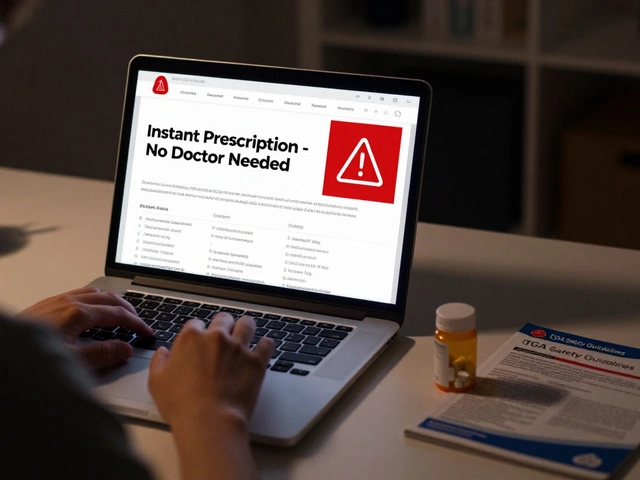Try grabbing a bottle of turmeric tablets and telling your skeptical friend it’ll fix their sore knee. You might get a raised eyebrow, a lecture about ‘placebo effects’, or maybe a wary smile. Yet, holler ‘Ayurveda’ in any major city in India, or across any wellness forum on the internet, and odds are, you’ll find someone who swears by its powers. The rise of Ayurveda isn’t just a social media trend – the global Ayurveda market hit over $9 billion in 2023, with people spending on treatments, supplements, and therapies promising ancient wisdom. This isn’t just about nostalgia. In a world hammered by chronic stress, sleepless nights, and pill bottles, Ayurveda, with its slow, ritualistic approach, draws serious attention. But is it good for you? Or is it a gentle-sounding trap hiding untested risks?
What Exactly is Ayurveda? Unpacking the Basics, Buzz, and Baggage
Ayurveda sounds fancy, but at its core, it’s India’s homegrown health system – a mix of herbal medicine, food rules, massage, and old-school philosophy tied together by a strong belief that balance keeps you healthy. The word "Ayurveda" comes from Sanskrit. "Ayur" means life, "Veda" means knowledge. Put together, it means "knowledge of life." That’s big, right? But it also means Ayurveda doesn’t just hand out herbs for colds. It dives into how you eat, sleep, deal with your emotions, and pretty much everything your grandma nagged about.
Now, Ayurveda doesn’t fit into the modern doctor’s toolkit. It’s built around doshas—Vata, Pitta, and Kapha. These are meant to be ‘energies’ or mind-body types, something between personality quizzes and body chemistry. The idea: everyone gets a blend at birth, and most health issues come from ‘imbalances’ in these doshas. There’s an art to getting your doshas checked—Ayurvedic doctors (called ‘vaidyas’) might take your pulse, look at your tongue, even quiz you about cravings. You don’t get an MRI; you get stories about your constitution and a custom plan.
Ayurveda’s treatments? It’s not just about what you swallow. Sure, there are thousands of rasayanas (herbal formulas). But there’s also Panchakarma (a five-step deep ‘detox’ involving massage, oil therapies, and eating clarified butter – ghee – until you basically beg for mercy). There’s yoga, meditation, daily oiling routines, weird scraping tools, and enough herbal teas to fill an entire aisle. In India, Ayurvedic clinics stand alongside modern hospitals, and Ayurvedic degrees are recognized officially. In the US, the UK, Australia, stuff gets labeled ‘supplement’, and regulations are lighter. This matters, because not all Ayurvedic stuff is created equal, and safety? Not guaranteed.
People don’t just use Ayurveda for the sniffles. The World Health Organization surveyed a chunk of Indian adults and found nearly 80% used Ayurvedic remedies at some point, mostly for things like digestive issues, skin conditions, arthritis, and chronic stress symptoms. The list runs from IBS and eczema to migraine, anxiety, and even boosting immunity. But here’s a fun fact: In Kerala, where Ayurveda is a tourist draw, a surprising chunk of chronic neurological patients—stroke, Parkinson’s, epilepsy—go for Ayurvedic therapy after mainstream hospitals lose hope. That’s faith. Or desperation. Or just not wanting more pills.
People get hooked by Ayurveda’s appeal: fewer side effects, greater focus on lifestyle, everything “natural.” But Ayurvedic medicine is not entirely plant-based—some formulations use metals like lead, mercury, or arsenic, which they claim are processed to be safe. That’s a tough sell given what’s commonly known about heavy metals. And the global supplement market is packed with loose regulation, so not every turmeric pill is equal.
It’s not all tradition and ancient scrolls. Ayurveda has evolved—there are clinics blending Ayurveda and modern diagnostics, universities doing research, and international wellness retreats offering personalized diets based on dosha quizzes. The World Health Organization endorsed including Traditional Medicine (including Ayurveda) into national health plans. India even created a dedicated Ministry—AYUSH—to promote Ayurveda and document practices, which isn’t a small thing. Celebrity endorsements? Gwyneth Paltrow, Matthew McConaughey, and even Kourtney Kardashian have all dropped Ayurveda’s name.
To set the context, here’s a quick table showing where Ayurveda stands compared to modern medicine in India and globally.
| Region | Ayurveda Usage Rate | Government Regulation |
|---|---|---|
| India (Urban) | ~70% (use Ayurvedic treatments occasionally) | AYUSH Ministry, regulated practitioners/products |
| India (Rural) | ~80–85% (use home/traditional remedies regularly) | Often unregulated outside cities |
| US/UK/Australia | <10% (mostly supplements) | FDA/EFSA treat as supplements, loose oversight |
So is it good for you? The hype rides strong, but the facts draw a sharper line.

What Are the Benefits of Ayurveda? Evidence, Effects, and Everyday Wisdom
Alright, let’s cut to the chase. What can Ayurveda genuinely help with? And what does the evidence say—beyond testimonials and ancient scrolls? There are more than 1,200 peer-reviewed studies with “Ayurveda” in the title since 2000, but only a handful show robust, clear evidence for efficacy in humans. Still, a few bright spots are hard to ignore.
Digestion: This is Ayurveda’s playground. You hear about ginger, turmeric, triphala—a formula made from three fruits—and their ability to soothe digestive woes. Modern studies back this up: one trial published in the Journal of Gastroenterology in 2017 found that triphala worked comparably to conventional laxatives for functional constipation, without side effects. Another meta-study says ginger root speeds up gastric emptying—pretty handy when your takeout curry backfires.
Skin and Joints: Turmeric’s anti-inflammatory punch is legendary. And it’s not just hype—curcumin, the compound inside turmeric, has been shown to fight inflammation. A controlled trial at the All India Institute of Medical Sciences found turmeric as effective as ibuprofen for reducing arthritis pain. Neem and aloe vera, also darlings of Ayurveda, have shown results for eczema and mild acne—both in lab studies and in the real world. Oil pulling (a practice of swishing oil in your mouth) can cut oral bacteria, although it’s not a total replacement for brushing teeth.
Mental Health, Sleep and Stress: Yoga and meditation are deeply woven into Ayurveda. Clinical trials show practicing mindful breathing (pranayama) and meditation help lower cortisol (stress hormone), cut anxiety, and improve sleep quality. Ashwagandha, marketed as Indian ginseng, has caught the world’s eye for its anti-anxiety effect. A 2022 double-blind study at a Pune hospital found people who took ashwagandha scored 23% better on anxiety scales and 30% better on sleep efficiency than those who took a placebo.
Chronic Disease Management: Diabetes is a big focus. Some Ayurvedic herbs—like Gymnema sylvestre—demonstrate mild blood-sugar-lowering effects, but rarely replace modern meds. Another example is “Chyawanprash,” a jam loaded with amla (Indian gooseberry) and spices, sometimes cited for immune support. Again, small trials suggest some improvements, but long-term safety or disease curing? Not proven.
People often use Ayurveda as an “add-on” therapy. For instance, someone with rheumatoid arthritis might use prescribed drugs and add Ayurvedic massage for pain relief. A lot of Ayurveda’s value comes from its rituals—oiling routines that force you to slow down, focused meal timing, and sleep hygiene. These behavior tweaks often yield as much benefit as the herbs themselves. Think about daily abhyanga (oil massage) or scraping your tongue in the morning—turns out, these small rituals may enhance circulation and improve oral health, even if not everything is scientifically rock-solid.
But, Ayurveda isn’t magic. Modern science loves proof, and Ayurveda often falls into what researchers call “anecdotal evidence.” It’s not fake, but it’s not gold-standard clinical trial-level, either. A lot of benefit boils down to “feel-good” rituals, better habits, and slower living, coupled with ingredients that sometimes do help based on moderate-quality data. But, if you’re hoping for an Ayurvedic herb to cure cancer or reverse severe autoimmune disease, there’s no credible science supporting those claims.
Tips for Using Ayurveda Wisely:
- Always check if your doctor knows about your Ayurvedic supplements—mixing herbs and prescribed drugs can cause trouble.
- Don’t assume “natural” means safe—heavy metals can sneak into some traditional pills and powders.
- Stick to certified brands or get recommendations from a registered practitioner, ideally one with a BAMS degree (Bachelor of Ayurvedic Medicine and Surgery).
- Go slow. Add one thing at a time to your routine. That way, if you react badly, you’ll know what caused it.
- Don’t self-diagnose doshas online. It’s fun, like a BuzzFeed quiz, but a real assessment requires training.
Sure, Ayurveda won’t make you bulletproof, but if you’re battling insomnia, irritated skin, or stubborn bloating, there’s enough legitimate evidence—and a centuries-honed playbook—to make it worth trying alongside regular medical care.

The Risks and Warnings: What Can Go Wrong With Ayurveda?
Every rose has its thorns, right? Ayurveda’s greatest weakness is the “natural=harmless” myth. Most people (wrongly) think a plant-based medicine is safer than anything made in a lab. Reality check: more than 15% of Ayurvedic medicines surveyed by the US FDA between 2007–2016 contained unsafe levels of lead, mercury, or arsenic. In some cases, that’s intentional—ancient recipes call for metals to be mixed in and “purified.” Practitioners swear by their safety if prepared correctly, but there’s no real way for you or me to verify that in a random capsule bought online.
Heavy Metals and Contamination: A 2015 investigation from Harvard tested Ayurvedic supplements from Indian and US markets. Up to 21% had dangerous heavy metals. That’s not just bad luck—it’s a pattern. Kids have been hospitalized with lead poisoning after taking “herbal” remedies given for teething pain. Mercury toxicity can cause mood swings, memory loss, and kidney failure. Even common spices like turmeric can be adulterated to enhance color for sale. That’s one reason India and the US have started stricter import controls and better labeling, but the problem isn’t fixed yet.
Herb-Drug Interactions: Ashwagandha can lower blood pressure or mess with thyroid meds. Brahmi can increase sedation if you’re taking Valium or sleep aids. Some Ayurvedic detox regimes recommend long fasting and herbal purges—dangerous for people with diabetes or low blood pressure. The punchline: your body doesn’t care whether a chemical comes from a lab or a leaf; everything can cause reactions.
Poor Regulation, Big Risk: In India, legal Ayurvedic medicines require a license number on every bottle. In most Western countries, they’re considered “supplements,” which mostly means no one tests individual bottles for purity or accuracy. There are brands that hold up to the standards—Dabur, Himalaya, and Charak are big ones—but fakes slip through, and Chinese herbal supplements have been caught masquerading as Ayurvedic, too. Not every practitioner is legit either. Anyone can set up a “holistic healer” office where rules are fuzzy and promises run wild.
Serious Delays and Missed Diagnoses: This is the scariest part. Relying solely on Ayurveda for a serious disease—think cancer, stroke, severe infection—has led to cases where people missed the treatment window entirely. Even if you’re using Ayurveda for prevention or mild complaints, it’s vital not to ditch standard medical checkups and advice.
Real Case Reports:
- Lead poisoning in a toddler (USA): Child developed developmental issues after months on Ayurvedic powders for coughs. Hospital labs showed lead levels ten times safe limits.
- Kidney damage (India): Elderly woman admitted with renal failure after six months of unregulated ‘herbal detox’ for arthritis symptoms.
- Delayed cancer detection (UK): Mid-aged man self-treated stomach pain with Ayurvedic herbs bought online, missing stomach cancer diagnosis until it was too late for surgery.
And one more thing—Ayurvedic “panchakarma” detoxes can sound glamorous, but they come with hazards if done badly: severe dehydration, infections, even heart problems. Always go to a licensed, trusted clinic if you’re trying the real thing—never DIY at home using YouTube or dodgy wellness sites.
If you want to use Ayurveda, you’ve gotta be smarter than the marketing. Here’s what you do:
- Ask for credentials—your practitioner should be registered, ideally with a degree in Ayurvedic Medicine.
- Buy only certified, lab-tested products from known retailers.
- Tell your regular doctor about all supplements and herbs you’re taking.
- Watch for suspicious symptoms—unexplained fatigue, dark urine, stomach pain—when on new Ayurvedic meds.
- If you’re pregnant, breastfeeding, or giving herbs to kids, check with a doctor or pediatrician first.
Ayurveda has stuck around for 3,000 years for good reason—it can help, but only if you approach it with your eyes open and your critical thinking switched on. Enjoy the rituals, try new flavors, soak in the wisdom, but never let any tradition put your health at risk.





Write a comment